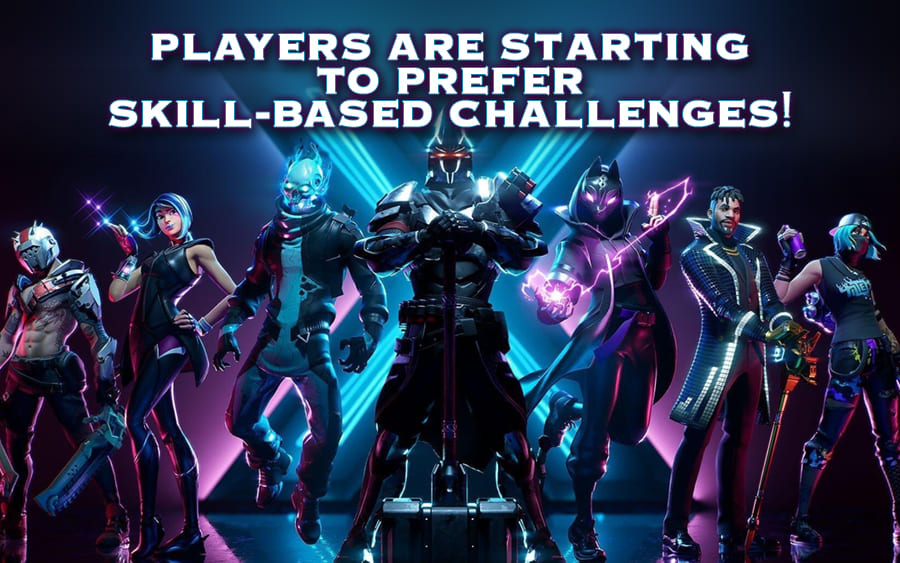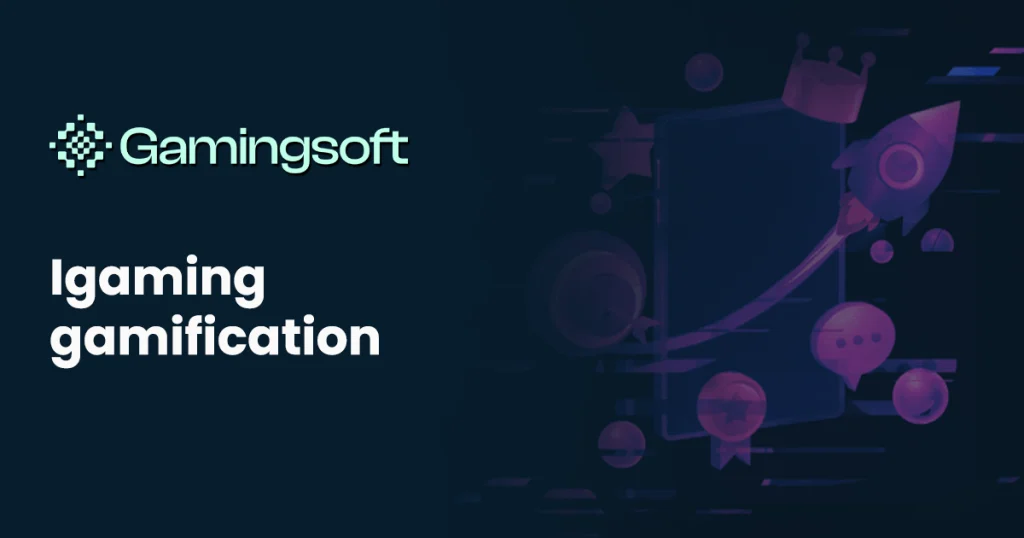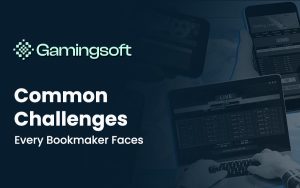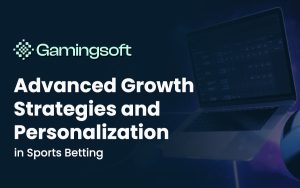Gamification has become one of the strongest engagement engines in modern iGaming. It turns gameplay into a rewarding, goal-driven experience — keeping players motivated, excited, and loyal.
For casino operators, iGaming gamification isn’t just about adding badges or challenges. It’s a complete behavioral design system that reshapes how players interact, spend, and stay. When executed well, it transforms user journeys into stories of progress, achievement, and community.
Gamification is no longer a feature. It’s a growth strategy — and the next evolution in player experience design.
The Strategic Evolution of iGaming Gamification
The early days of gamification in iGaming were simple — adding badges, ranks, and progress bars to keep players entertained. But today, the top-performing operators have turned those superficial layers into sophisticated behavioral systems integrated with CRM, AI, and real-time data engines.
The Journal of Information Technology (2025) found that gamified casino environments show up to 40% higher engagement and 35% longer player lifetimes when linked to backend analytics rather than static front-end features.
This evolution is rooted in one critical realization: player loyalty is no longer emotional — it’s engineered. By using algorithms that understand motivation patterns, modern platforms can now shape player journeys dynamically, predicting what will keep them active, when they’ll churn, and how to bring them back.
A clear example of this transformation can be seen through GamingSoft’s architecture during SiGMA Asia 2024. Instead of treating gamification as a marketing layer, GamingSoft embedded it at the system level — connecting achievement data, behavioral triggers, and loyalty mechanisms across all providers in real time.
This strategic approach redefines how operators think about player experience. It’s no longer about adding mechanics; it’s about designing ecosystems that scale loyalty as efficiently as they scale games.
Building Scalable Gamification Frameworks in iGaming
Gamification has outgrown its reputation as a “bonus mechanic.” For serious operators, it has become the foundation of data-driven engagement architecture — where behavioral design, analytics, and personalization work as one continuous loop.
To scale it sustainably, operators need a structured framework that integrates every layer of the business — from marketing automation to game aggregation, CRM, and regulatory compliance.
Let’s break down the five pillars that define scalable iGaming gamification systems.
1. Unified Data Infrastructure
Gamification thrives on feedback. Every mission, reward, or leaderboard update relies on real-time player data. But in many casinos, that data is scattered across separate systems — wallets, games, affiliates, and support tools — making it hard to analyze or act on.
A unified data infrastructure solves this problem. It centralizes player profiles, tracking every session, wager, and achievement into one behavioral dataset. This allows the platform to personalize rewards, monitor performance, and predict drop-off patterns.
The ScienceDirect Journal on User Retention (2021) emphasized that when gamification systems are linked to consolidated data pipelines, engagement increases by up to 45% due to improved context-awareness.
In practice, this means integrating CRM, payment gateways, and content APIs through standardized formats — such as JSON or modular REST APIs — so your platform always “knows” what your players are doing, even across different brands or providers.
That’s exactly how GamingSoft designed its Connect+ ecosystem — one core brain that synchronizes every data point into actionable engagement insights.

2. Behavioral Modeling and Dynamic Motivation Mapping
Gamification works because it taps into human psychology. But scalable gamification goes beyond psychology — it uses machine learning to translate human behavior into predictive patterns.
Every player has a unique motivation curve. Some chase competition, others chase mastery, others simply want to belong. Understanding these nuances allows operators to serve the right challenge at the right time.
Through behavioral clustering, platforms can group players into engagement personas: “explorers,” “collectors,” “socializers,” or “achievers.” Each cluster receives different challenges and rewards, driven by data rather than guesswork.
This method — known as dynamic motivation mapping — creates adaptive gameplay that feels personalized even in large-scale ecosystems. It’s the same principle that powers Netflix recommendations or Spotify playlists, but in iGaming, it builds emotional continuity between sessions.
GamingSoft’s internal modeling tools extend this further, merging behavioral data with in-game telemetry, helping partners fine-tune difficulty, reward cadence, and narrative arcs based on live player responses.
3. AI-Driven Personalization and Adaptive Campaigns
Once the behavioral framework is in place, AI transforms data into precision engagement. Traditional gamification often fails because it’s static — missions and levels stay the same for everyone, regardless of how they perform.
AI fixes that. It continuously analyzes player interaction patterns — session time, game type preference, and even emotional indicators — to adapt challenges and rewards dynamically.
For example, if a player’s engagement dips, the system might trigger a “comeback mission” with achievable goals. If a high-value player completes a streak, AI might unlock exclusive tournaments or narrative-based events to sustain their momentum.
The Forbes Business Council (2024) reported that iGaming platforms using AI for dynamic gamification saw 32% higher reactivation rates compared to static reward systems.
You can see a practical application of this approach in”Level Up Your Online Casino Experience: The Power of Gamification“, where adaptive missions increased both engagement time and in-game spending without raising bonus costs.
4. Retention Mechanics that Go Beyond Rewards
The biggest misconception about gamification is that it’s about giving players more bonuses.
But long-term retention doesn’t come from rewards — it comes from recognition.
Advanced iGaming gamification systems focus on progress visibility: showing players what they’ve achieved and what’s next. Tiered progression systems, social leaderboards, and interactive milestones help maintain forward momentum.
However, retention is also emotional. Casinos that build narrative gamification — stories tied to player achievements — outperform those using only numeric systems. When players feel they’re part of an evolving journey rather than repeating the same cycle, their attachment grows.
This emotional retention approach was reflected in GamingSoft’s operator data during SiGMA Asia 2024, where narrative-driven progression achieved 50% longer average play sessions than generic leaderboard mechanics.
In essence: gamification is not about bribing users to stay; it’s about giving them reasons to care.
5. Cross-Platform Consistency and Regulatory Compliance
The modern iGaming player moves fluidly between mobile, desktop, and live-dealer experiences.
If gamification isn’t synchronized across those channels, the illusion of progress breaks — and with it, player motivation.
Scalable frameworks must deliver unified progress across every environment. This requires centralized state management, encrypted API communication, and compliance-safe storage of achievement data.
In regulated markets, this becomes even more complex. Gamification systems must align with regional laws — ensuring that missions and rewards don’t violate bonus restrictions or responsible gaming guidelines.
For example, some jurisdictions limit mission-based rewards tied to wagering volume. Adaptive compliance systems can detect this in real time and adjust promotions automatically.
GamingSoft Connect+ addresses this challenge by embedding localized rule libraries — automatically enforcing compliance logic per region while maintaining gameplay continuity. It’s engagement without regulatory friction.
Driving Future Engagement Through Monetization and Innovation
Gamification doesn’t just improve engagement — it directly affects profitability. When designed strategically, iGaming gamification can increase ARPU (Average Revenue Per User), boost cross-sell rates, and reduce churn simultaneously.
Turning Engagement into Revenue
Every mission, reward, or progress system extends a player’s lifetime value. Players who feel part of an evolving experience spend 25–40% more on average than those driven only by bonuses. This effect compounds as players unlock higher-tier achievements, join tournaments, or purchase cosmetic upgrades that personalize their profiles.
Some operators now link loyalty levels to exclusive experiences — such as private live-dealer events or personalized VIP missions. These experiences convert retention into monetization without appearing pushy or exploitative. In essence, gamification reframes spending as participation.
The Forbes Business Council (2024) reports that operators using gamified loyalty structures see up to 27% higher conversion on reactivation campaigns. It’s not about bigger bonuses — it’s about smarter, emotional incentives that reward commitment.
Emerging Technologies Reshaping iGaming Gamification
The next generation of gamification will be driven by three major technologies: AI, AR, and blockchain.
Artificial Intelligence refines personalization. It studies behavioral data to predict player mood and engagement probability, adjusting challenges or bonuses automatically. This turns retention into an algorithmic science rather than a marketing guess.
Augmented Reality (AR) is bringing gamification into physical space. Imagine players unlocking digital badges during live events or blending casino achievements with real-world experiences. This hybrid interaction deepens immersion and provides new promotional formats.
Meanwhile, blockchain introduces verifiable progression. Achievements, rewards, and milestones can be tokenized into NFTs or on-chain badges that players own permanently. This adds transparency to loyalty systems and prevents reward manipulation.
Together, these technologies transform gamification from interface design into a living digital economy — one where every action has measurable, transferable value.
For deeper context on how innovation connects to operational growth, see “How GamingSoft Became the Best Aggregator 2024 at SiGMA Asia“, which explores modular integration and innovation pipelines in iGaming infrastructure.
Building the Future with GamingSoft Connect+
All these innovations require one thing: a powerful, flexible backbone. That’s where GamingSoft Connect+ comes in.
Connect+ isn’t just a toolkit; it’s an ecosystem. It integrates game data, player analytics, and marketing automation into a unified engagement engine. Operators can deploy complex mission systems, dynamic leaderboards, and personalized retention campaigns — all controlled through a single dashboard.
Its modular API structure allows seamless expansion. You can plug in new game providers, CRM tools, or data sources without rebuilding your system. Real-time monitoring ensures that missions, achievements, and AI recommendations respond instantly to player behavior.
More importantly, Connect+ was built with compliance by design. It supports multi-jurisdiction logic, responsible-gaming triggers, and transparent audit trails for regulated markets — ensuring innovation never compromises integrity.
By combining behavioral analytics, automation, and AI, Connect+ empowers casinos to create experiences that feel alive, responsive, and personal — no matter how large their audience becomes.
For operators looking to integrate gamified CRM strategies deeper into retention funnels, “Leveraging CRM Solutions for Sustained Success in Online Casinos” offers complementary insights into how player data and engagement layers align perfectly with Connect+ features.
Conclusion
The evolution of iGaming gamification marks a fundamental shift in how operators think about growth.
It’s not about acquiring more players — it’s about building deeper relationships with the ones you already have.
From scalable frameworks and AI-driven personalization to next-gen technologies like AR and blockchain, gamification is redefining the future of interactive entertainment. Casinos that integrate these systems now will lead the next decade of player experience.
And with GamingSoft Connect+, that future is already within reach. It gives operators the data, tools, and intelligence to transform engagement into loyalty — and loyalty into long-term revenue.
Because in the new era of iGaming, the real jackpot isn’t the game. It’s the connection you build with every player.






